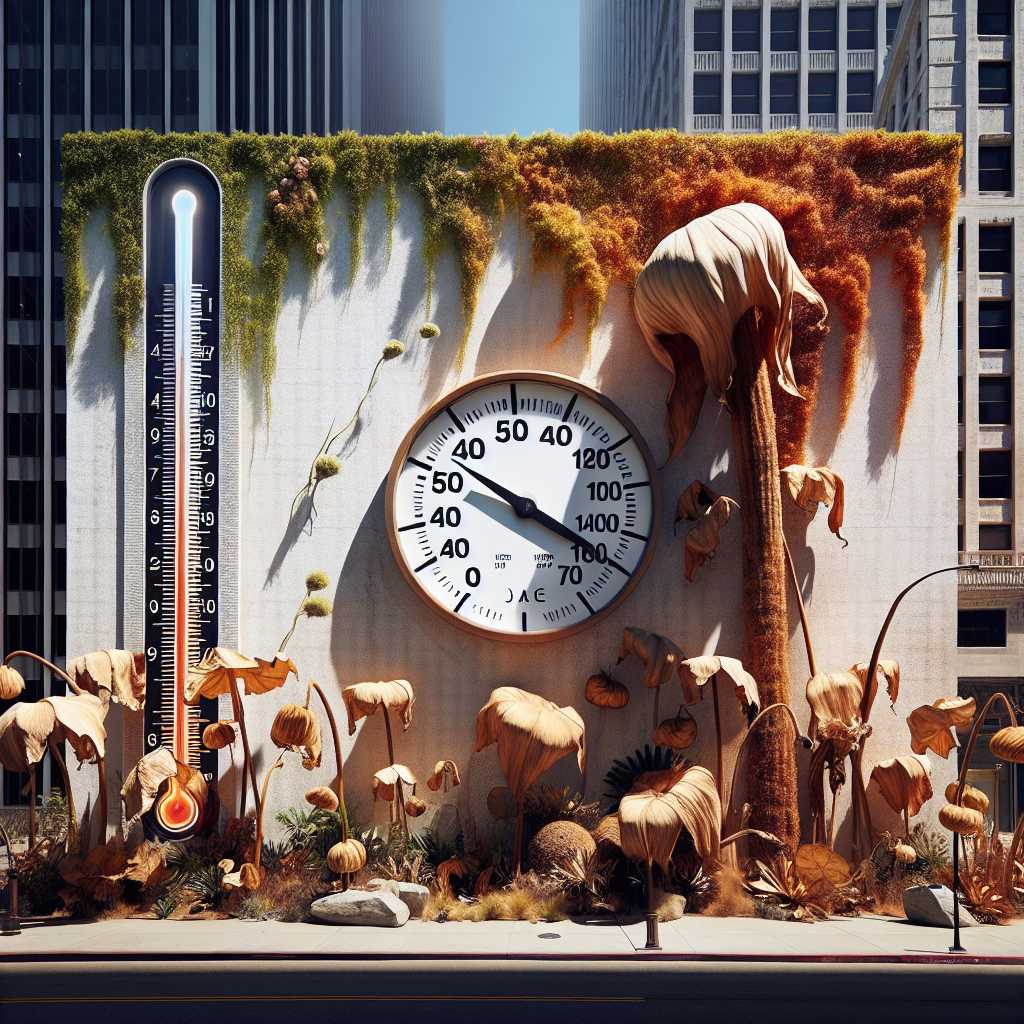Understanding California’s Heat Wave Phenomenon: A Look at the Temperature Surge
In recent years, California has been experiencing an increased frequency of heat waves – periods of unusually hot weather that can have significant impacts on the environment, public health, and infrastructure. This article provides an in-depth analysis of heat wave temperatures in California, exploring its effects, the science behind these temperature increases, and the measures being implemented to mitigate its impact.
The Science Behind Heat Waves
Heat waves are characterized by temperatures that soar well above the average for a particular region and for an extended period. In California, these temperatures often exceed 100 degrees Fahrenheit (38 degrees Celsius), particularly inland where the heat can be more intense compared to coastal areas. Understanding the reasons behind these high temperatures is complex and multifactorial but can be largely attributed to certain atmospheric conditions.
High-pressure systems can act like a lid on the atmosphere, trapping heat at the surface and preventing it from rising. This creates a static air that heats up more as it is compressed by the pressure. Additionally, changes in the jet stream pattern can steer cooler marine air away from California, allowing hotter air to settle over the state. Climate change is also believed to be a contributing factor, as rising global temperatures lead to increased frequency and intensity of extreme weather events including heat waves.
California’s Record-Breaking Heat Waves
The recent history in California showcases several periods where temperatures have reached extremely high levels. For instance, in 2020, Death Valley reached 130 degrees Fahrenheit (54 degrees Celsius), which is among the highest temperatures ever recorded on Earth. Similarly, several Californian cities experience unprecedented heat during these extreme events, with temperatures consistently hovering above normal for weeks at times.
Such magnitude of heat not only affects human comfort but also exacerbates drought conditions, exacerbates wildfires, stresses electricity grids due to increased air conditioning use, and poses dire health risks, particularly for vulnerable populations such as the elderly, young children, and those with preexisting health conditions.
Immediate and Long-Term Impacts of Heat Waves
Heat waves carry immediate short-term effects such as heat exhaustion and heatstroke amongst the population. The agricultural sector suffers as crop yields may decrease due to intense heat and water shortages. Furthermore, wildlife also struggle to survive as their habitats experience water scarcity and elevated temperatures.
Moreover, these extreme temperature events have critical long-term impacts on California’s landscape and bourgeois. Persistent hot weather conditions may lead to environmental shifts where species that cannot cope with higher temperatures steadily disappear, impacting biodiversity. Heat captures up urban centers where concrete and asphalt store warmth raise nighttime temperatures, compromising citizens’ ability to recover from daytime heat exposure.
Efforts to Combat Heat Wave Challenges
California has been enforcing measures to mitigate heat wave issues. Public awareness campaigns inform people about staying hydrated, avoiding strenuous outdoor activity during peak heat times, and recognizing signs of heat-related illnesses. The state’s energy grid operators prepare for surges in electricity demand principally for air conditioning by ensuring sufficient production and reserve power available. There is also an increasing emphasis on green infrastructure such as planting trees or installing reflective roofs to reduce urban heat island effect — where urban areas become significantly warmer than their rural surroundings.
Since adaptation to increased temperatures will likely be needed due to climate change projections, efforts at both local and international levels focus on climate resilience. This includes programs for smart growth planning that integrates consideration of heat risks into land use decisions. Furthermore, cutting-edge policies target lowering greenhouse gas emissions with the ultimate chief goal of lessening global warming impacts.
